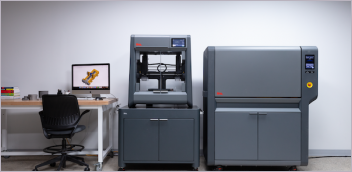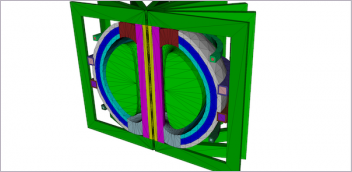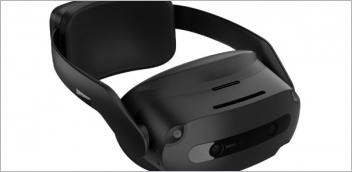Micro 3D Printing Nozzles for Spectroscopy
To eliminate the need for a cuvette, researchers can use a small but highly precise nozzle that produces a liquid sheet, or jet.

Micro 3D printed nozzles
Latest News
July 22, 2021
Spectroscopy is the study of the interaction between electromagnetic radiation and matter. With liquids, this research tool usually involves a cuvette, an optically-clear container that holds samples while they are irradiated.
In some applications, such as terahertz (THz) spectroscopy or studies using a dye laser, the cuvette can produce artifacts or otherwise interfere with spectroscopic analysis. To eliminate the need for a cuvette, researchers can use a small but highly precise nozzle that produces a liquid sheet, or jet.
Electrical discharge machining (EDM) can fabricate small, high-precision nozzles, but EDM equipment is not readily available in research settings, is expensive, can only machine conductive materials, and cannot produce the required sharp corners.
3D printers are more commonplace and versatile, but most cannot produce small high-precision parts, especially those with an opening just 0.2 mm diameter. Among 3D printers that can produce parts like this, the print times are relatively slow, a problem when higher quantities and quick turnaround times are required. Plus, the material properties of 3D printed parts may be inadequate.
These were the challenges faced by Adrian Buchman, a PhD student for the Chair of Physical Chemistry II at the Ruhr-University Bochum (RUB) in Bochum, Germany. Buchman was using hand-made nozzles for spectroscopic research but wanted a better alternative. He found it with Boston Micro Fabrication (BMF).
Searching for a Solution
The nozzle that Adrian Buchman needed was not commercially available and required a degree of precision that was measured in tens of micrometers (µm). Moreover, he wanted 18 versions of this nozzle, many with steeper or shallower outlets, to support a variety of applications.
The nozzle material needed to withstand the high pressures associated with these applications, and the method of fabrication needed to support production in larger quantities with a relatively quick turn-around time.
Buchman then discovered Projection Micro Stereolithography (PμSL), an additive manufacturing technology from BMF that can achieve +/- 10 µm accuracy.
A form of stereolithography (SLA), PμSL uses a flash of ultraviolet (UV) light to rapidly photopolymerize an entire layer of material for more efficient processing and faster build times. PμSL also uses specially-formulated liquid polymers with well-qualified mechanical properties. BMF also has an open material system that supports third-party materials and expands the potential solutions.

Micro 3D printed nozzle, 2.4 x 2.4 x 2mm - print time, 4-5 hours for 18 pieces
3D Printing the Nozzles
Buchman asked BMF to micro 3D print nozzles in 18 slightly different versions using one of the company’s microArch™ S240 3D printers. This 10 µm series platform is an ideal solution for businesses and universities that require ultra-high resolution, accuracy and precision in a desktop package.
The RG photopolymer that BMF selected is a Forward AM Ultracur® photopolymer resin from BASF. This durable engineering material is transparent yellow or black in color and can be used to print both functional and end-use parts.
Each of the spectroscopic components that BMF 3D printed measured 2.4*2.4*2 mm^3. The layer height was 10 µm and the total print time for 18 pieces was just 4 to 5 hours.
Buchman liked how BMF’s 3D printer offered the required precision and could produce the different nozzles quickly and in large quantities. When cured, the RG photopolymer has well-qualified tensile and flexural properties that can withstand spectroscopic pressures. Importantly, BMF was able to produce all of the parts that Buchman needed within several weeks.

Evaluating the Experiment

Final Test
More Boston Micro Fabrication Coverage

Subscribe to our FREE magazine, FREE email newsletters or both!
Latest News
About the Author
DE’s editors contribute news and new product announcements to Digital Engineering.
Press releases may be sent to them via [email protected].







